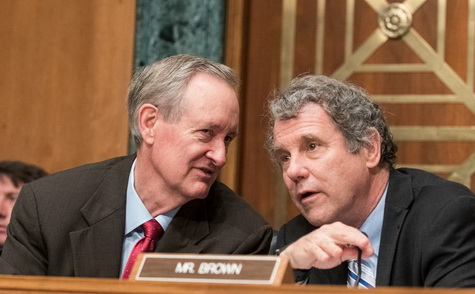
The Roundtable submitted energy and climate policy recommendations to the House Select Committee on the Climate Crisis on Thursday, while members of the House Ways and Means Committee unveiled a draft legislative package of more than 20 energy tax incentives – including incentives to promote commercial and residential building energy efficiency.
The Roundtable’s climate letter submitted Nov. 21 responds to a request for information from the Select Committee. This panel has no authority to write legislation but is authorized to study climate change and issue legislative policy recommendations (expected by March 31, 2020).
In its study and review of climate policy recommendations, the Select Committee has held a series of hearings featuring various stakeholders – including one focused on “Cleaner, Stronger Buildings.” (Roundtable Weekly, October 25, 2019) .
The Roundtable’s comments to the Select Committee highlighted the priorities advocated by its Sustainability Policy Advisory Committee (SPAC) to:
- Improve the model building energy codes process by enacting the Portman-Shaheen Energy Savings and Industrial Competitiveness (ESIC) Act. (Roundtable Weekly, September 27, 2019)
- Enhance EPA’s voluntary ENERGY STAR incentive programs for both commercial buildings and tenants.
- Improve the quality and reliability of the national data collected by the federal Commercial Building Energy Consumption Survey.
- Create meaningful accelerated depreciation periods to encourage investments in high performance equipment to retrofit existing commercial and multifamily buildings. (Roundtable Weekly, May 10, 2019)
- Foster public-private partnerships to finance safety and resiliency improvements to the electricity grid, the natural gas pipeline network, and other energy infrastructure assets.
Meanwhile, a discussion draft of the Growing Renewable Energy and Efficiency Now (GREEN) Act was released Nov. 19 by the chairman of the House Ways and Means Subcommittee on Select Revenue Measures – Rep. Mike Thompson (D-CA).
The GREEN Act would extend and revise a number of expired tax incentives, including provisions aimed at encouraging taxpayers to improve the energy efficiency of homes and commercial buildings. Specifically, the discussion draft includes:
- An updated and enhanced deduction for capital expenditures on energy-efficient commercial building property (section 179D)
- An expanded tax credit for the developers of new, energy-efficient homes (section 45L)
- A modified tax credit for energy-efficient improvements to existing homes (section 25C)
Under the bill, the revised tax incentives would be available through 2024. Following release of the draft legislation, House Ways and Means Committee Chairman Richie Neal (D-MA) stated, “The climate crisis requires bold action, and I’m pleased that we’re using the legislative tools at Ways and Means’ disposal to create green jobs, reduce carbon emissions, and help heal our planet.” We look forward to hearing from stakeholders to ensure this bill is effective in helping improve energy efficiency and eliminating carbon emissions.”
Prospects for passing the GREEN Act are unclear as it is a Democratic initiative that currently lacks Republican support.
Additionally, The Roundtable and coalition partners continue to lay the research and data foundation for a new tax incentive that would provide accelerated depreciation for high performance, HVAC, lighting, windows, and other equipment to retrofit existing commercial and multifamily buildings, known as “E-QUIP.” (See Roundtable Weekly, May 10, 2019). The coalition’s objective is for bipartisan introduction of an E-QUIP bill in early 2020.
The Roundtable’s Tax Policy Advisory Committee (TPAC) plans to analyze the proposed measures and respond to any eventual energy tax legislation that may be introduced in the New Year.
# # #








